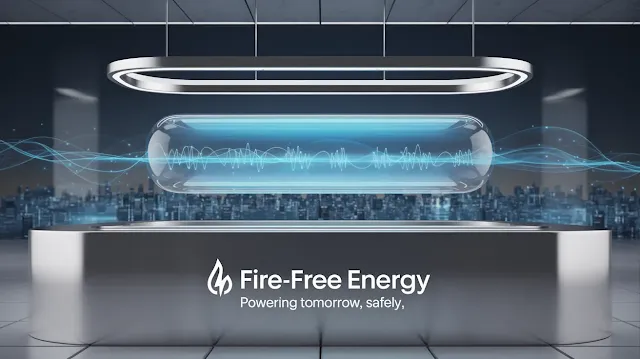Fire-Free Energy: How Renewable Tech is Redefining Safety Standards
A New Era of Clean Energy Requires a New Kind of Safety
As the world races to transition away from fossil fuels, renewable energy systems, solar panels, battery storage units, and wind farms, are becoming the backbone of the global power grid. But with this transition comes a pressing challenge that’s often overlooked: ensuring safety in renewable energy systems.
Fires, explosions, and system failures are rare but real risks, particularly when energy systems are pushed to operate at large scale or in extreme environments. That’s why safety isn’t just a technical concern, it’s becoming a core pillar of innovation in renewable energy.
The Hidden Dangers in the Clean Energy Boom
Battery Fires and Overheating
Lithium-ion batteries are commonly used in energy storage, but they’re prone to thermal runaway, a dangerous chain reaction that can lead to fires or explosions. Factors such as overcharging, physical damage, or poor temperature control increase this risk.
Electrical Hazards in Solar and Wind Installations
While solar and wind systems don’t burn fuel, they are still electrical systems. Faulty wiring, panel overheating, or poor weatherproofing can cause short circuits or fires, especially in densely packed arrays or during extreme weather.
Engineering a Safer Renewable Future
Flame-Resistant Battery Design
To prevent fires, engineers are designing next-generation batteries with solid-state electrolytes and flame-retardant materials. These innovations reduce the risk of ignition even under stress.
Smart Sensors and Predictive AI
Advanced sensors embedded in energy systems monitor voltage, heat, and pressure in real time. AI platforms can now analyze this data to predict failures before they happen, alerting maintenance teams or triggering auto shutdowns.
Self-Extinguishing Systems
For high-risk zones, companies are introducing automated fire suppression systems using foam, CO₂, or dry mist. These systems are activated the moment unusual heat patterns are detected, preventing fire from spreading.
Solar Energy Safety Innovations
Solar farms are becoming more resilient thanks to:
Thermal regulation layers that prevent panel overheatingSafer inverters with arc-fault detection
Redundant wiring pathways to reduce the risk of total system failure
Some solar companies now offer systems with remote diagnostics and shutdown features, enhancing fire protection in real time.
Wind Power Without the Risk
Turbines today are equipped with:
Lightning protection systemsInsulated gearboxes and generators
Emergency braking systems that reduce blade speed during storms
Wind energy firms are also embracing predictive maintenance tools, which use historical data to schedule repairs before mechanical stress leads to failure.
Who’s Leading the Fire-Free Energy Revolution?
United Arab Emirates and Saudi Arabia
Both countries are investing in clean energy megaprojects and have mandated safety-first designs in solar and wind farms, including AI-powered monitoring tools.
Germany and Norway
These nations are integrating fireproof regulations into their national energy frameworks, requiring new systems to meet rigorous safety certifications.
United States
California, in particular, has pioneered wildfire prevention technologies tied to solar infrastructure, including grid isolation switches and weather-responsive controls.
The Economic and Environmental Impact of Safer Systems
Safer renewable systems offer powerful long-term benefits:
Lower insurance and maintenance costsExtended system lifespan
Reduced downtime due to incidents
Boosted public trust and investment in clean energy
Safety innovation is not just about avoiding harm, it’s a strategic advantage in the competitive clean tech market.
Training and Awareness: The Human Side of Safety
Even the best systems need skilled operators. That’s why major energy firms are investing in training programs for:
Emergency response and fire controlSafe installation practices
AI tool integration and monitoring
Empowering the workforce is key to unlocking the full potential of safe, renewable infrastructure.
What the Future Looks Like for Fire-Free Energy
The next generation of energy systems will likely be modular, smart, and self-regulating. With machine learning, robotics, and adaptive materials, the sector is moving toward a vision of zero-incident energy infrastructure.
In the near future, every battery pack, inverter, and turbine could come preloaded with its own defense mechanisms, making fire-free, self-healing energy systems the new industry standard.
Conclusion: Safety is the New Sustainability
Clean energy must be sustainable, scalable, and above all, safe. With innovations in materials, monitoring, and machine intelligence, companies are proving that we don’t have to sacrifice safety for sustainability.
By building renewable systems that protect both people and the planet, the energy sector can deliver on its promises, without risk, and without compromise.




Write a comment, your opinion matters to us